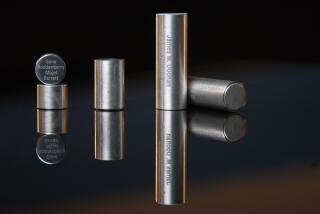A wake, some prayers and a little retail therapy: How NASA engineers mourn the death of a spacecraft
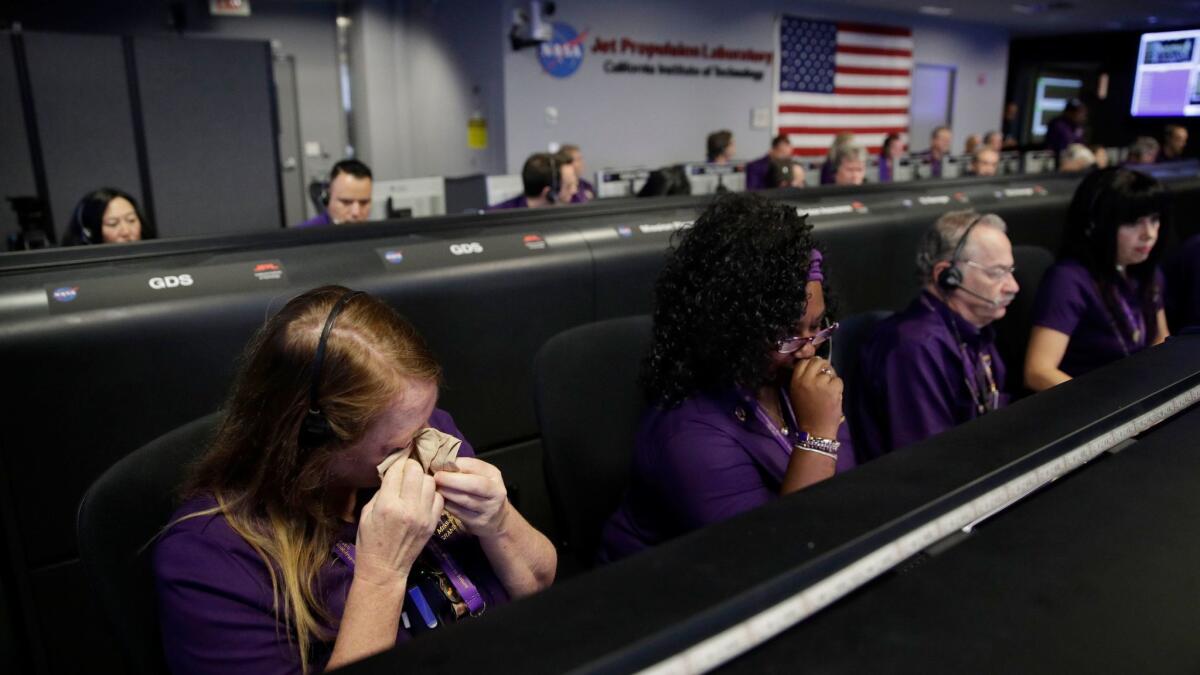
- Share via
They called it a wake, but the loved one they had come to mourn wasn’t a person.
It was the Cassini spacecraft, the robotic explorer that had spent the last 13 years unlocking the mysteries of Saturn, its rings and its many moons.
Soon after Cassini vaporized like a shooting star in the Saturnian sky, about 175 members of the mission’s engineering team gathered in an airy banquet room at the La Canada Flintridge Country Club to eulogize their spacecraft.
There was toasts and singing. But there were some misty eyes as well.
“You have this great pride in all you were able to accomplish,” said Earl Maize, Cassini project manager at NASA’s Jet Propulsion Laboratory. “But it’s still an emotional loss.”
When it comes to spacecraft, even scientists get sentimental.
These flying hunks of metal call their caretakers in the middle of the night, infuriate them with their quirks and dazzle them with amazing discoveries about the universe.
So is it any wonder that when their time has passed, their human handlers will feel a sense of loss?
Cassini’s instruments were working just fine at the time of its demise; the problem was that it was running out of fuel. Mission planners worried that if they didn’t crash the orbiter into the ringed planet, it might collide with one of Saturn’s ice moons and contaminate it. That would complicate future efforts to search for signs of life there.
The team had seven years to prepare for the spacecraft’s end on Sept. 15. But that didn’t make it easy to say goodbye.
Some of the assembled mourners had been with the mission since before it blasted into space in 1997.
The banquet room was booked for five hours. It wasn’t enough.
Two kinds of loss
When a spacecraft dies, it’s not just the exploration that comes to an end. It’s also the end of an intense collaboration here on Earth.
“People put so much of their heart and effort into what we used to call the care and feeding of the spacecraft,” said Eilene Theilig, a planetary geologist who worked as the project manager for the Galileo mission to Jupiter at JPL and is now an ordained minister in Fort Worth. “It is such a team effort, and when it goes away, you are dealing not only with the loss of the spacecraft, but also the loss of the team.”
When it goes away, you are dealing not only with the loss of the spacecraft, but also the loss of the team.
— Eilene Theilig, former project manager for the Galileo mission to Jupiter
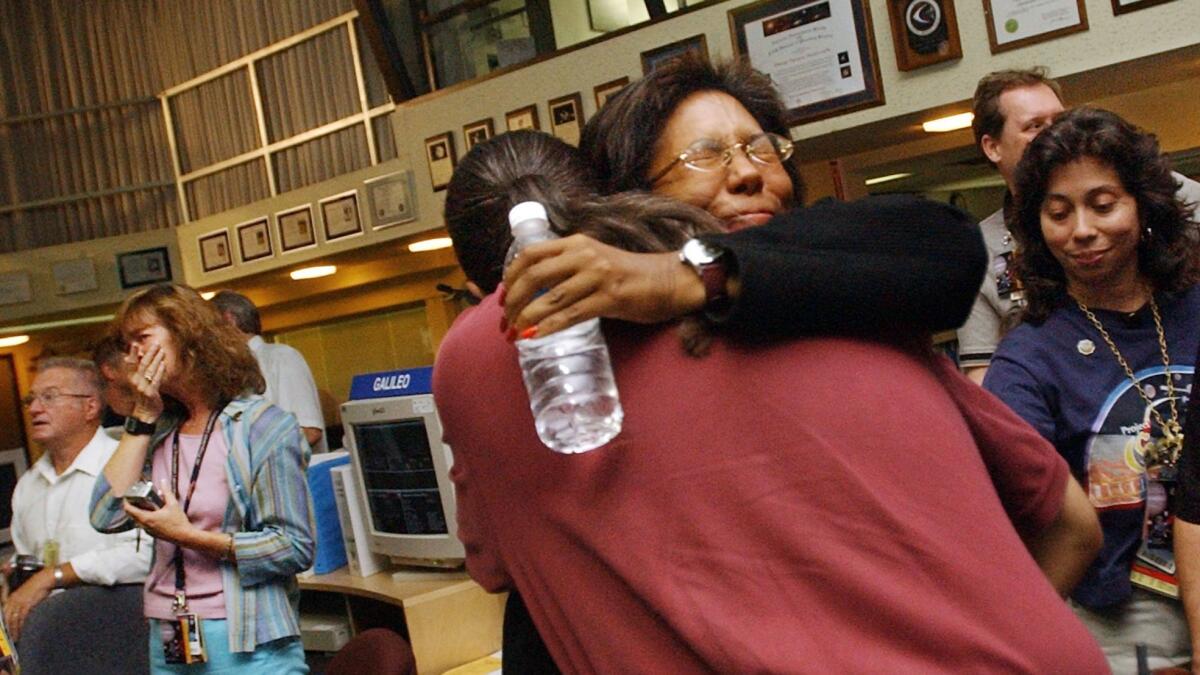
Nicolas Altobelli, a scientist at the European Space Agency, bid farewell to two spacecraft in a 12-month period.
In addition to serving as the ESA’s principal scientist for Cassini, he worked on the agency’s Rosetta mission to the comet known as 67P/Churyumov–Gerasimenko. After a dozen years in space, Rosetta crash-landed on the comet’s austere surface in September 2016.
Working on a flagship space mission is like being on a ship that has been sent to explore a new world, he said.
“Everyone is kind of unified by this one object, and that’s the beauty of it,” he said. “But when it’s over you realize that it’s not the ship disappearing that hurts the most, it’s the dismantling of the crew.”
Sometimes the sense of loss begins even before the mission ends.
I just burst into tears.
— Todd Barber, Cassini’s lead propulsion engineer
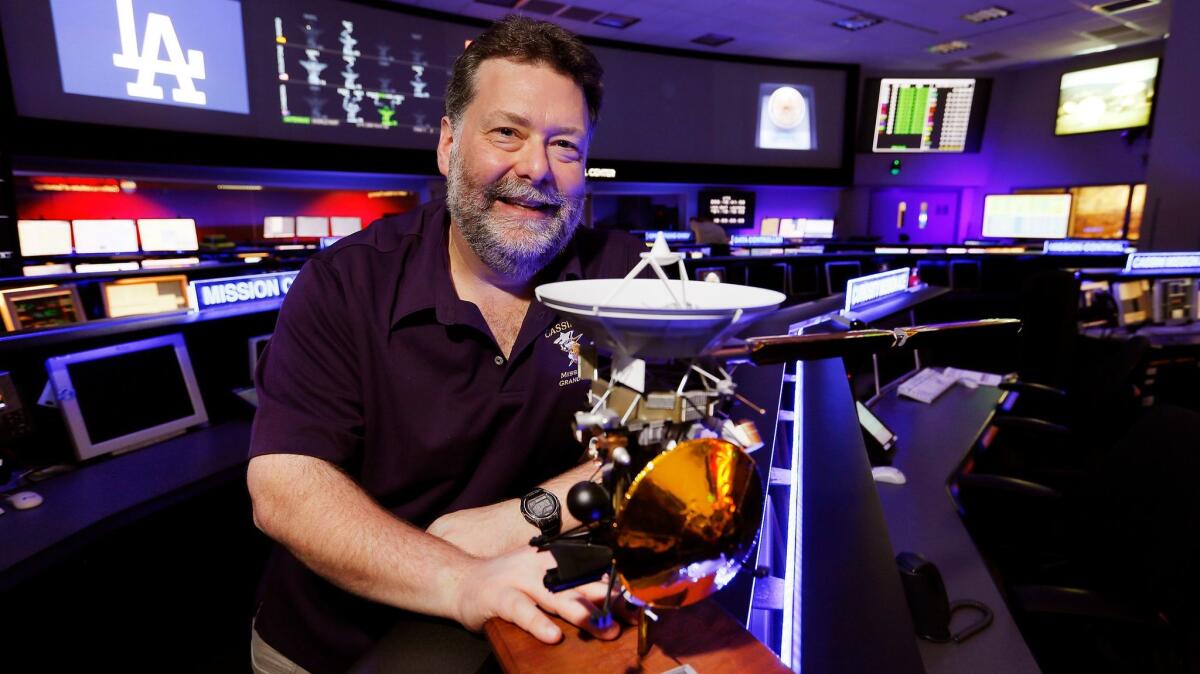
Todd Barber, Cassini’s lead propulsion engineer, found himself unexpectedly overcome by emotion during Cassini’s last weeks. He had just completed a routine report detailing how much propellant was likely left in the spacecraft’s thrusters.
“I’ve done almost 3,000 of those reports over the past 20 years,” he said. “When I finished my very final one I just burst into tears.”
Jo Pitesky also found herself feeling increasingly distraught as the mission’s final days drew near. A science planner for the Cassini mission, she reached out to a friend for advice on how to honor the mission’s end.
That friend, Deborah Silver, happens to be a rabbi.
“It was probably the weirdest pastoral counseling request she ever got,” Pitesky said.
To help Silver understand the significance of the event, Pitesky sent her an animation that dramatized Cassini’s final, unwinnable battle against the atmosphere of Saturn.
“Even people who have nothing to do with the mission watch that video and cry,” she said.
It’s always a lovely thing when you find a piece of music or literature or anything that gives you that kind of echo of what you are feeling.
— Jo Pitesky, a science planner for the Cassini mission
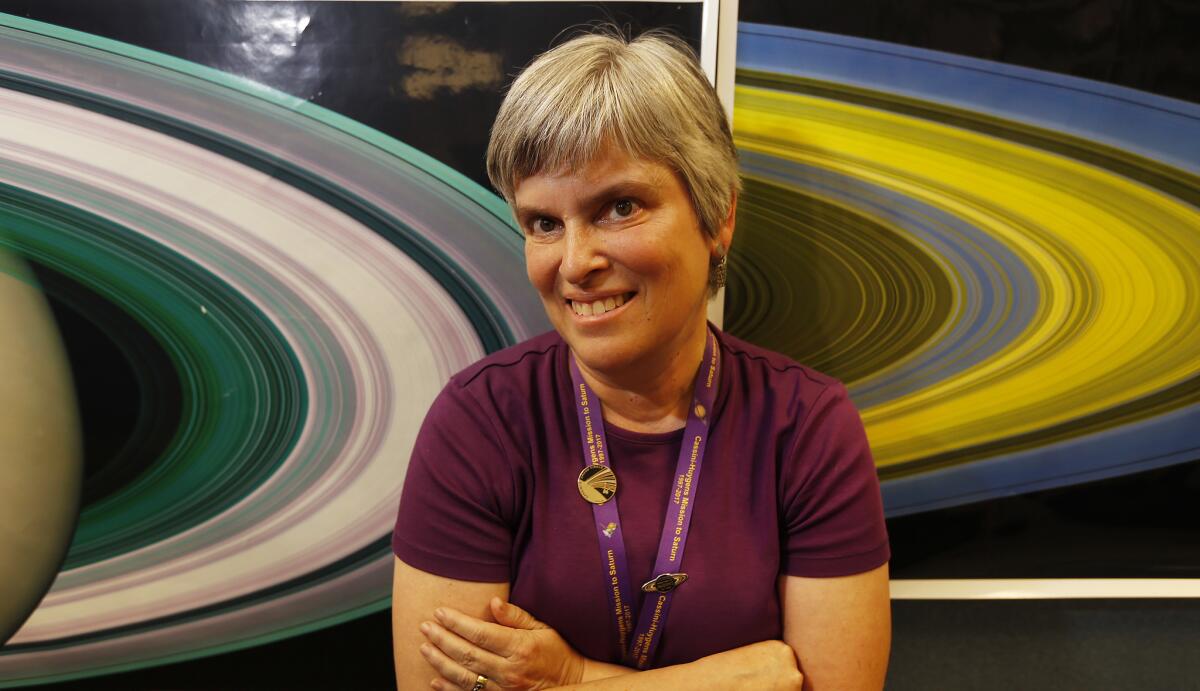
Silver was moved, and eager to help. In the days before the final signal came down, she wrote to Pitesky about a series of Sabbath prayers in which worshippers take a poetic trip through the cosmos as a way of singing God’s praises.
There is an ancient Midrash (interpretive text) that suggests that every aspect of the cosmos – heavens, Earth, even individual animals – is constantly singing their own verse from the Hebrew Bible.
“Jo and I spoke about what verses Cassini might have sung,” Silver said.
One that came to mind was Isaiah 40:26:
Lift your eyes on high and see: who created these?
He who brings out their host by number, calling them by name;
By the greatness of his might and because he is strong in power,
Not one is missing.
“When she sent this to me I could feel the tears welling up again,” Pitesky said. “I’m not a biblical literalist, but it’s always a lovely thing when you find a piece of music or literature or anything that gives you that kind of echo of what you are feeling.”
Of course, everyone mourns differently. And some less than others.
“I think I’ll start missing it, but I don’t miss it yet,” said Julie Webster, Cassini’s chief engineer at JPL who was charged with making sure the spacecraft stayed in good working order. “I’m still in the recovery phase of ‘I’m so glad this thing isn’t calling me in the middle of the night.’’’
Then there are folks like Bonnie Buratti, principal scientist and supervisor of the Comets, Asteroids, and Satellites Group at JPL. She became so attached to the robotic explorer that she tried to dampen her pain with a little retail therapy the day before the final plunge.
I bought a new car.
— Bonnie Buratti, a principal scientist at JPL who turned to retail therapy to cope with the loss of Cassini
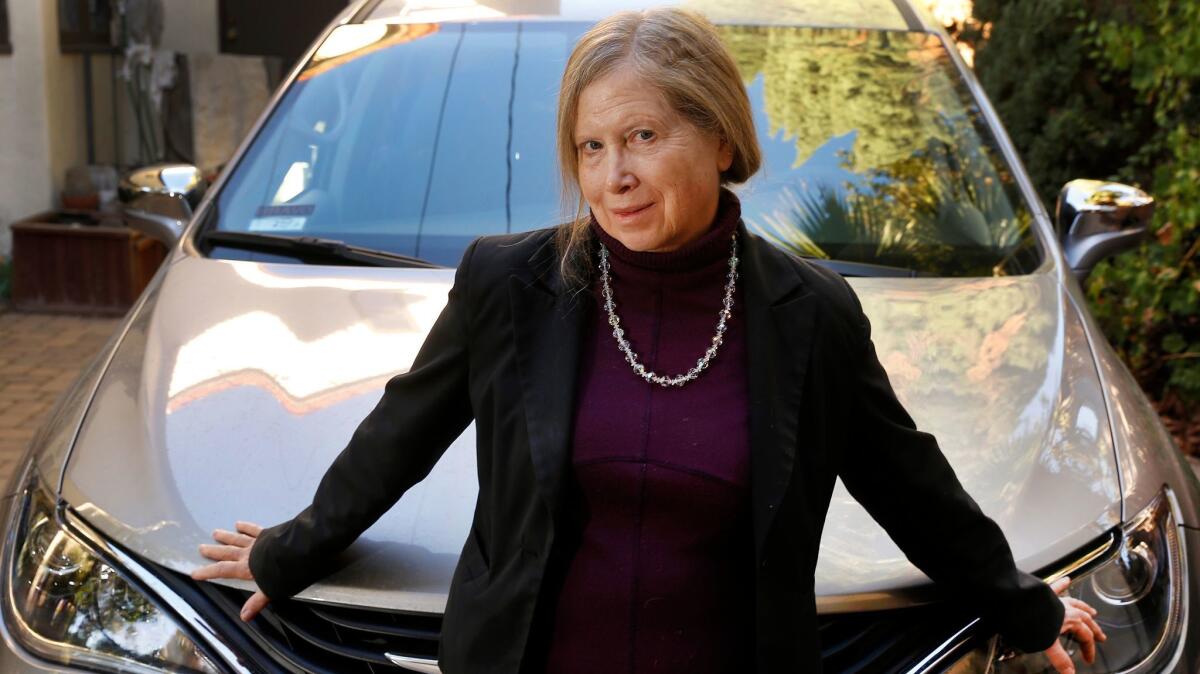
“I bought a new car,” she said. “I didn’t realize it was the substitute when I was buying it, but when I went to pick it up I realized what I was doing.”
The new car is a silver Pacifica hybrid minvan, and Buratti said it reminds her of Cassini.
She named it Cassie.
Worse ways for a mission to end
Comet researcher Paul Weissman worked on both Galileo and Rosetta during his tenure at JPL. He said seeing them end is like losing a member of your family — but working on missions that never got off the ground is worse.
“That was more hurtful,” said Weissman, who has experienced that pain twice. “We put in a lot of effort and they didn’t happen because of politics or finances or petty personalities. I’m still very bitter about that.”
And then there are the ones that make it to space but meet an untimely end. Consider the Mars Observer, which launched in 1992 and exploded just a few days before it was supposed to begin orbiting the red planet.
“That was a very heavy time around here,” said Webster, who was telecommunications lead for that mission. “Twenty years later I was finally ready to give a talk about what happened. It was like a group purge.”
Pitesky said that while there are feelings of grief and loss for Cassini, there is a not a sense of tragedy.
“It’s like how it’s different when a young adult dies, rather than someone who had the fullness of time,” she said.
It also helps that JPL has a lot of experience with the emotions tied to the end of a mission. Maize said the Cassini leadership team reached out to the lab’s employee assistance program to get advice on how to help those who might be struggling with the transition to post-Cassini life.
“You have this great pride in all you were able to accomplish. But it’s still an emotional loss.
— Earl Maize, Cassini project manager at JPL
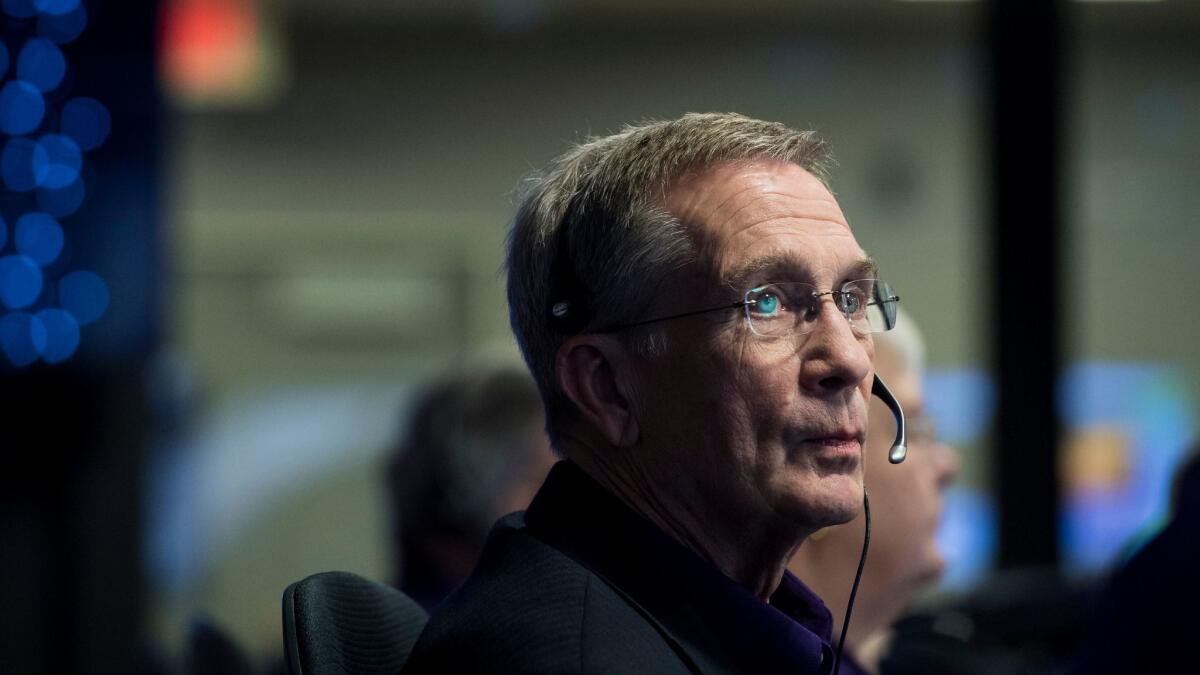
“Among the many suggestions were that we get people together soon after the event,” he said.
Which explains the gathering at the country club.
That day, there was a performance by the Cassini singers, a group of about a dozen mission staffers who write and perform parody songs with a Cassini theme. Their end-of-mission repertoire included two Hamilton parodies — “You’ll be Back” and “The Saturn System” (sung to the tune of “The Schuyler Sisters”).
At one point the group rapped:
We hold this truth to be self-evident
No planets are created equal
And when I meet the head of NASA (Unh!) I’mma compel HER to include a Cassini sequel
The crowd roared.
Do you love science? I do! Follow me @DeborahNetburn and “like” Los Angeles Times Science & Health on Facebook.
MORE IN SCIENCE
Cassini, the NASA spacecraft that expanded the search for life beyond Earth, dies in Saturn’s sky
As NASA’s Cassini mission flames out over Saturn, scientists mark bittersweet end of mission
‘OK. Let’s do it!’ An oral history of how NASA’s Cassini mission to Saturn came to be


